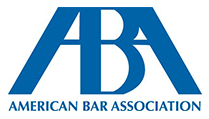Defective Ladder Injury
Construction Site Injuries – Ladder Defect Lawyer
Ladders of all shapes and sizes are common on construction sites big and small. Whereas powered lifts are bulky and require a power source, ladders are compact, easily transported on even light-duty trucks and vans, and do not require a power source to operate. Therefore, when a worker on a jobsite needs to reach a height in order to complete his or her job, he or she most often reaches for a ladder. If that ladder has a defect that renders it unsafe, however, that worker may find him- or herself seriously injured or killed in a ladder fall.
Ladder Safety Features and Ladder Defects
A basic ladder consist of rungs attached to two rails (one on either side of the rung) that allow the user to reach a certain height. Ladders can either be self-standing (forming an “A” shape when they are opened) or can be leaned against a solid surface for support, such as a wall. Regardless of its size or shape, however, most ladders have several safety features in common:
- Materials for the rungs and rails. The ladder itself should be constructed out of durable material that enables the ladder to be used in its intended manner.
- Non-slip feet. These help the bottom of the ladder’s rails remain in constant contact with the ground. In most situations these feet are made out of rubber so as to provide some friction when the ladder is placed on a smooth, slick surface. In other cases, the ladder’s feet may be of the same material as the ladder but may have “treads.” If these treads are worn, or the rubber feet are missing, the ladder can unexpectedly slide out from underneath the user.
- Locking or latching mechanism. If the ladder is meant to stand independently (in the shape of an “A”), the ladder will have two braces that hold the two sides of the ladder apart at the proper angle and provide tension to keep the ladder secure. Ladders that are telescoping in nature (sometimes called extension ladders) are meant to be leaned against a solid surface for support but will nonetheless have safety latches to keep the ladder from collapsing unexpectedly. If these braces or latches are defective or missing, then the ladder may not be able to support the weight of the user and will collapse.
- Non-slip rungs. The person using the ladder may have all sorts of dirt and debris on his or her shoes. This can include water, mud, dirt, cleaning chemicals or substances – all things which can create a slip hazard and cause the user to lose his or her footing when he or she steps onto a run. To help decrease the chances that this happens, many ladders are equipped with tread or ridges on the rungs that act to create better traction between the user’s shoes and the ladder. Ladders that are missing these treads are oftentimes more dangerous to use, especially when the user’s footwear is likely to have wet or slippery substances on them.
- Warning signs. Ladders should also include safety or warning information – specifically information about the maximum weight limit of the ladder and where a user should and should not step. Ladder manufacturers cannot simply assume that, because of their simplicity, every individual should know how to user a ladder.
When any one of these safety features are missing, a defect exists that renders that ladder unsafe. Defective ladders may collapse or fail, causing the user to fall and injure or kill him- or herself. Ladders can fail quickly and without warning, which only adds to the dangers faced by users of defective ladders.
Who is Responsible for Ladder Defect Injuries?
A manufacturer who permits (either knowingly or through inattention) to allow a defective ladder to be purchased and used by a consumer may be held responsible for injuries and deaths caused by that defect. However, the manufacturer may not be the only responsible party in a ladder defect case. If another person was aware or should have been aware of the defective condition of the ladder (i.e., the injury victim’s employer or a retailer), then that person, too, may be responsible for injuries if that person owed a legal duty to the injured user and then breached that duty by failing to warn the user of the defect.
Stern Law, PLLC has the resources and experience to thoroughly investigate ladder defect injury cases and identify all parties who played a role in bringing the fall or other injury incident about. This helps ensure that ladder defect injury victims are able to recover the full amount of compensation they need to address the significant medical costs and lengthy periods of unemployment that can accompany these types of accidents. Compensation can also address any temporary or permanent limitations the injured user may face as a result of his or her injuries. Learn more about Stern Law, PLLC and how we can assist you by calling (800) 462-5772.













